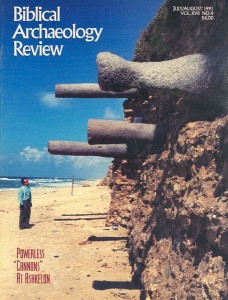The Past Meets the Future: Reconstructing with Computers
Archaeologists working around the globe are discovering that ancient artifacts and architecture may now be better understood by applying advanced computer technology. Computers can give archaeologists invaluable assistance with mapping and creating models, cataloging and performing statistical analyses. Some archaeologists are even taking portable computers right into the trenches, though more are using them at field headquarters and still more in university offices.
The most dramatic application of computers in archaeology is the CADD program—Computer-Assisted Drafting and Design. CADD programs have a long history in architecture and engineering, but they have only recently become available to archaeologists. These programs store location and dimension information with great precision; they provide visualization aids and they automate the production of paper drawings.
Several years ago, when CADD programs began to be used as mapping aids, their output was only two-dimensional. Even such limited programs made possible excellent maps and plans; time-consuming redrafting so often required, was eliminated because the drawings could be easily modified at various scales.
Already a library member? Log in here.
Institution user? Log in with your IP address.

